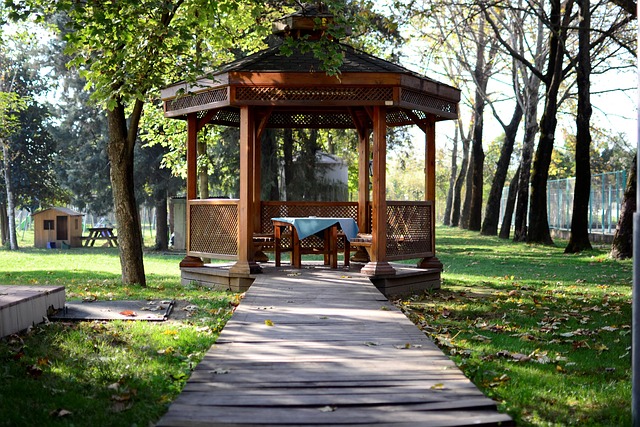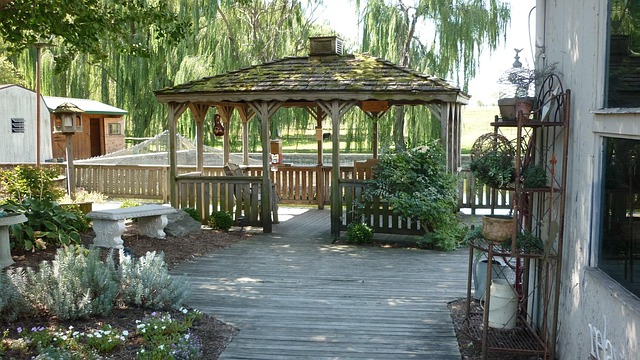A pergola can be a wonderful addition to your outdoor space. It provides shade, a cozy spot to gather, and a stylish structure that adds character to your home. However, not all materials are equal when it comes to durability and maintenance. Some require constant care, while others can last for years with very little upkeep. Here’s a clear guide to help you choose the best material for your pergola without all the fluff.
Why Material Matters
Your pergola will face sun, rain, wind, and other elements all year round. That means choosing the right material is key to making sure it stands strong and looks good for a long time. Some materials warp or fade quickly under the harsh rays of the sun. Others are prone to rot or insect damage. The right material lets you enjoy your pergola without spending all your time and money on repairs. Getting this decision right from the start can save you a lot of trouble. It lets you focus on making your outdoor space a place to relax instead of a maintenance project.
Wood: Naturally Beautiful but Higher Maintenance
Wood is a classic choice. It adds a warm, rich texture that feels timeless. Cedar and redwood are popular varieties. They naturally resist rot and insects, which makes them more durable than many other kinds of wood. But even the best wood needs care. To keep it looking great, you’ll need to treat it with a sealant and refinish it every few years. Without proper maintenance, the color can fade, and the structure may warp or crack. Nonetheless, many people appreciate its unique character and are willing to put in the effort.

Vinyl: Durable, Low Maintenance, and Affordable
Vinyl is a strong contender when you want a low-maintenance option. It resists rot, insects, and warping. It doesn’t need periodic staining or painting. Vinyl comes in a range of colors and finishes, although it typically sticks to whites and neutrals. The material is lightweight, which makes it easier to install, and it’s often more affordable than wood or metal. Some people find it less charming than wood, but for a low-fuss structure that performs well over time, vinyl is hard to beat.
Metal: Modern Look and Great Durability
Metal pergolas made from aluminum or steel bring a sleek, contemporary style to your backyard. They’re strong, durable, and nearly maintenance-free. Aluminum is lightweight and naturally resists rust, while steel is a bit more heavy-duty. Both materials can handle strong winds and heavy rain without warping or fading. A protective coating adds additional resistance to the elements. This makes metal a smart choice if you want a structure that performs well in all kinds of conditions. The clean lines of metal also suit a more modern or industrial aesthetic.
Fiberglass: The Ultimate Low-Maintenance Option
Fiberglass might be the best material for those who want maximum durability with minimum effort. It’s lightweight yet strong, and it resists rot, warping, and insects. This material stands up well to UV rays and heavy rain. It doesn’t absorb water and won’t warp or crack under pressure. Furthermore, it can be molded into nearly any style or color you wish. Fiberglass is more expensive than vinyl or wood, but it’s a worthwhile investment if you want something that will last for decades with little to no maintenance.

Composite: The Best of Both Worlds
Composite materials blend wood fibers and resin to create a durable, stylish pergola. It has the rich appearance of wood without the upkeep. It resists rot, insects, and warping much like vinyl while retaining some texture and depth. Composite pergolas come in a range of finishes and colors, allowing you to match them to your home’s style. It performs well in all kinds of conditions and typically comes with lengthy warranties. This makes composite a strong contender for homeowners who want the best of both worlds the look …



 Invest in energy-efficient appliances for your new home, such as ENERGY STAR-certified refrigerators, dishwashers, washing machines, and HVAC systems. These appliances are intended to use less energy while providing maximum performance, resulting in decreased power costs and less carbon emissions. To save the most energy, choose appliances with high energy efficiency ratings and innovative features like programmable settings and smart controls.
Invest in energy-efficient appliances for your new home, such as ENERGY STAR-certified refrigerators, dishwashers, washing machines, and HVAC systems. These appliances are intended to use less energy while providing maximum performance, resulting in decreased power costs and less carbon emissions. To save the most energy, choose appliances with high energy efficiency ratings and innovative features like programmable settings and smart controls.

 A whistling kettle is the most effective way to speed up your tea or coffee-making process. If you don’t want that, then an electric model will be more efficient than a stovetop one for this purpose. You should always check the speed rating of the kettle you’re buying before making your final decision. If you are an active type of person, a kettle with a high-speed rating will better you. If someone buys an electric or stovetop model designed to provide water at boiling point quickly, it will be able to do so in a much shorter amount of time than the other types.
A whistling kettle is the most effective way to speed up your tea or coffee-making process. If you don’t want that, then an electric model will be more efficient than a stovetop one for this purpose. You should always check the speed rating of the kettle you’re buying before making your final decision. If you are an active type of person, a kettle with a high-speed rating will better you. If someone buys an electric or stovetop model designed to provide water at boiling point quickly, it will be able to do so in a much shorter amount of time than the other types. Kettles come in a variety of shapes and sizes. It is essential to determine what type of size you need before making a purchase decision. Some kettles come with a bottom element only. This is typically an indication that the kettle is not intended to be used for tea but also allows you to boil water very quickly, making it useful in less time-sensitive situations or when convenience trumps taste.
Kettles come in a variety of shapes and sizes. It is essential to determine what type of size you need before making a purchase decision. Some kettles come with a bottom element only. This is typically an indication that the kettle is not intended to be used for tea but also allows you to boil water very quickly, making it useful in less time-sensitive situations or when convenience trumps taste.